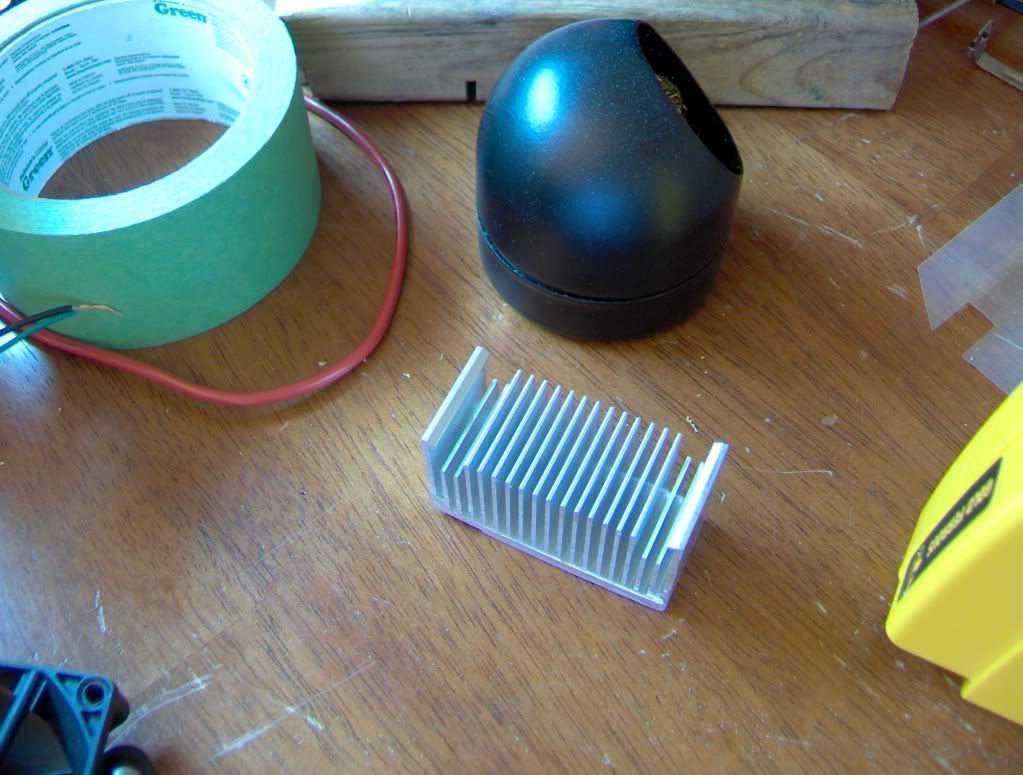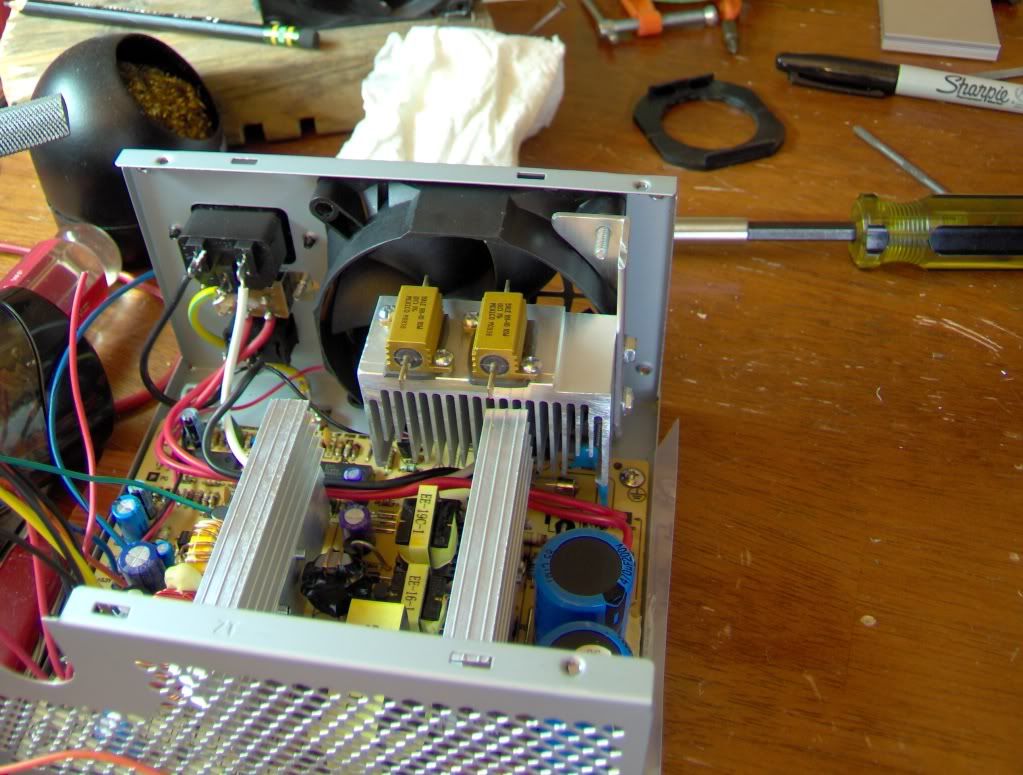Have you ever wanted a steady power source for electronics tinkering, but didn't want to spend hundreds of dollars on a specially made bench PSU? Me too! Do you have a bunch of old computer PSUs lying around gathering dust? Me too! Let's see if we can take care of both problems at once.
I forgot to take any 'before' pics, but just picture a normal, cheap ATX PSU. I picked it up on clearance at Microcenter a while ago; it's a "400w" PSU by iMicro. Needless to say, I wouldn't have trusted a PC to it, but it was ~$5, I think, so I grabbed it. Now I'm glad I did.
So, first the problems I ran into. With modern PSUs, even if you short out the 'power' pin, they will only power on into a lower-power standby mode. In order to bump it up into a full power mode you have to provide a load. Now, most places I read said you only needed a load on the 5V rail, but then I started finding some stating a need for a load on the 3.3V rail as well.. For some reason, the first time I tried hooking everything up a couple weeks ago it didn't work, but now it is...I'm just gonna assume I had something wrong before. I finally figured it out for sure by opening up an ATX PSU tester that I have.
Solution:
Acquire two <=10 Ohm resistors rated at >=10W. Place one between the 5V rail and ground, and the other between the 3.3V and ground. Now your PSU should start up.
Next problem:
The 5V resistor gets hot. YMMV depending on what power rating your resistor is and what physical style you got. I got special power resistors built into small aluminum heatsinks that have mounting brackets to mount to either the chassis or a better heatsink. Given the amount of heat the 5V resistor generated when I put a steady 3A load on the 12V rail, I chose to mount it to another heatsink.
Solution:
I have several old heatsinks from the Pentium and Athlon XP eras, so I had a couple options. I tried a dry run with one of the tiny Pentium heatsinks, and decided it was still getting too hot.
So, I broke out one of the Athlon XP heatsinks:
Now, that's a bit large, and honestly not all needed. Soo..let's see what we can do about that. I finally wised up about using my dremel to cut thick aluminum..So this was the first time I used my new 7" metal cutting discs with my compound mitre saw.
Dry-mounted in the PSU housing. The resistors will be screwed to the heatsink base eventually, instead of just resting on top, but I have no screws the right size, so that will have to wait for the weekend. Between the resistors and the heatsink, I'm using small pieces of that dense heat-conductive-foam-stuff you find in high-temp electronics (if anyone knows what this stuff actually is, please speak up). I scavenged quite a bit of it out of a trashed 50" Plasma TV I found last weekend (cracked screen, not worth repairing), so that was convenient timing.
More to come. Stay posted.










 Reply With Quote
Reply With Quote








 Yeah, it's only 5V, but the 5V rail is rated to (supposedly) a max of 30A.
Yeah, it's only 5V, but the 5V rail is rated to (supposedly) a max of 30A.  ..yeah, I need to fix that gap..
..yeah, I need to fix that gap..


 so far left of center i'm in right field
so far left of center i'm in right field


